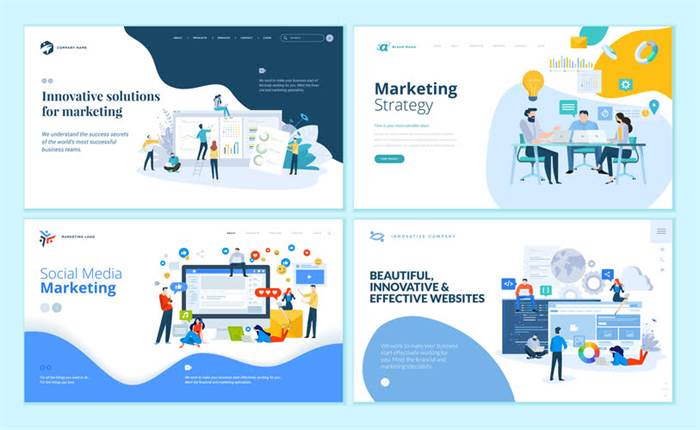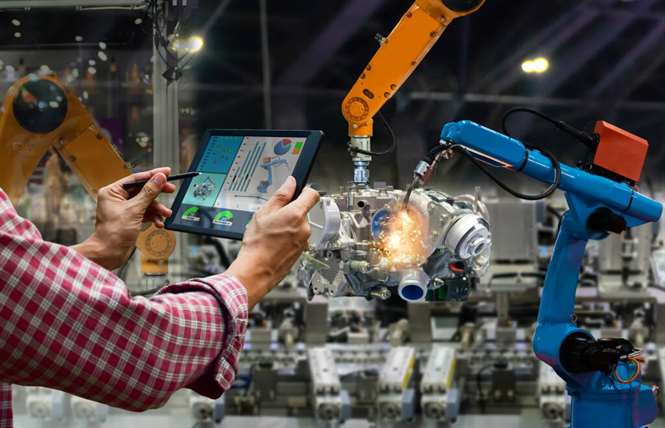The face of the industry is changing, following the global trends of digitalization and sustainability. Industrial manufacturers have been reluctant to make the shift, but since change is inevitable, it’s better to embrace AI now rather than get left behind. Right now, there is a growing skills gap that could cause problems in the near future. The sector will need operators who are both skilled in the manufacturing side and AI capabilities. This means that the faster manufacturers integrate AI, the more likely they will see future growth and success as Industry 4.0 takes over. An effective AI takes two to three years to train on historical data, so the lack of acceptance has already put the sector behind.

” Similar machinery means uniform data, which means you want a high volume of identical inputs and outputs from which to take data. If you only have a few machines or many different kinds of machines, it will be difficult to collect data worth analyzing. Though the scenario of idle machines and workers is not ideal, it might still be preferable to machines breaking down or workers having to fulfill so many orders that quality suffers – if leaders are given the choice between them. Either way, the difference AI is making in this process is helping manufacturers find a medium between these two extremes and maintain that balance based on available data.
Industrial Manufacturing Is Falling Dangerously Behind, But There’s Still Time
Danone, a French multinational food business, developed an ML system in 2011 to build a platform for more precise demand forecasts. The manufacturer selected ToolsGroup, a leading supply chain optimization software system provider, as a partner. As a result, Danone cut forecast errors by 20% and lost sales by 30% due to ML demand forecasting.
With digital twin technology, organizations can simulate products, machines, and even entire factories. As a result, the concept of the industrial metaverse has emerged, with virtual systems reflecting real-world ones. Artificial intelligence, digital twins, sensors, and more come together in the industrial metaverse to create simulations that inform real-world actions.
One Click Metal Is Changing the Metal 3D Printing Game for Smaller Manufacturers
At the heart of AI is data and being able to analyze and apply that data more efficiently and effectively. The manufacturing industry collects more data than virtually any other, but much of that data goes to waste. The result is an organization that can build a safer, greener, faster, and more high-performance environment by leveraging digital technologies. Below is a list of some of the most significant benefits manufacturing organizations gain when implementing effective AI transformations. As the uses and benefits of this cutting-edge technology become apparent, society is quickly becoming more comfortable using AI in applications of all kinds – from art and language to business and finance and beyond. By creating an integrated app that pulls data from the breadth of the IoT-connected equipment you use, you can ensure that you’re getting a God-like view of the operation.
We are here to help organizations manage risks, enable growth and support sustainable operations. Additionally, smart contracts can automate processes and reduce the need for intermediaries, improving efficiency and reducing costs. Bridgestone’s AI in manufacturing case study showcases how AI can reshape manufacturing by fostering meticulous quality control and boosting performance standards. It has launched a groundbreaking tire-building and molding system, called “Examation”. It leverages AI in manufacturing to enhance tire quality, productivity, and consistency.
How AI can democratize production of and access to goods
A lot of traditional optimization techniques look at more general approaches to part optimization. Generative-design algorithms can be much more specific, focusing on an individual feature, applying an understanding of the mechanical properties of that feature based on materials testing and collaboration with universities. Although designs are idealized, manufacturing processes take place in the real world, so conditions might not be constant. An effective generative-design algorithm incorporates this level of understanding. With AI, manufacturers can leverage predictive maintenance techniques such as condition-based monitoring to detect mechanical failures before they occur.

We at Forbytes create ML solutions to automate tedious operations, boost corporate efficiency, and drive actionable decision-making. As a result, 3B-Fiberglass could predict a fiber break roughly 75 seconds in advance thanks to AI computer-vision analysis, as was initially intended. AI facilitates personalized manufacturing by analyzing customer preferences and data to create customized products. Mass customization becomes feasible as AI efficiently adapts production lines to produce unique items.
Practical Use Cases Where Generative AI powered AI Applications are Already Making an Impact
The convergence of AI, particularly generative AI, with metaverse and web3 technologies is creating a new frontier in manufacturing and industrial operations. Companies embracing this trinity of technologies will likely find themselves at the forefront of the next industrial revolution, armed with tools that foster innovation, efficiency, and sustainability. Generative AI, a subset of AI, involves algorithms that can generate new content or designs from scratch, given a set of rules and inputs.
- It can also be used to spot and correct errors made by 3D printing technology in real-time.
- AI technology captures and monitors design data, empowering engineers to create inventive product designs, shorten testing periods, and gain deeper insights into customer preferences.
- It helps you solve a particular problem by taking historic evidence in the data to tell you the probabilities between various choices and which choice clearly worked better in the past.
- In addition, AI can also discover relationships in the data previously unknown to the engineer.
- When collaboration remains paramount, companies can achieve remarkable breakthroughs and achievements due to the combined strengths of both humans and AI.
- By imbuing this system with artificial intelligence and self-learning capabilities manufacturers can save countless hours by drastically reducing false-positives and the hours required for quality control.
- Companies
can translate this issue into a question—“What order is most likely to maximize profit?
Future challenges and opportunities are then summarized in Sec. 6, and overall conclusions are drawn at the end. Despite this, artificial intelligence, machine learning and cloud computing have yet to be widely adopted by industrial manufacturers. While it seems logical to control the massive amounts of complex industrial equipment needed for manufacturing with digitalization, technology is not replacing humans nearly as fast as it potentially could. Thanks to AI, machines in the industrial environment can now make decisions by themselves based on complex data analysis.
AI-Powered digital twin use cases
From distributors to suppliers, sensors can be embedded throughout every step of the manufacturing process, ensuring equipment is optimized to its maximum efficiency. These technologies enable the rise of “cobots,” collaborative robots that can work alongside humans and understand instructions in plain English. Combined with the same motion-sensing technology as self-driving cars, cobots and machine vision-enabled manufacturing tools can sense and understand the world around them, preventing accidents and operating more efficiently. Predictive analytics can help anticipate demand patterns and optimize inventory management, while natural language processing can assist in automating customer service. Boeing is embracing the idea of the industrial metaverse, and the company is already building digital twins of their airplanes, along with simulations of the production systems that will build the planes.

Vibration signals from a defective rolling bearing were transformed using continuous wavelet transform. Statistical parameters computed from both the raw data and the pre-processed data were then utilized as candidate inputs to an RNN. Analysis has shown that the developed what is AI in manufacturing method is accurate in predicting bearing defect progression. In Ref. [122], a bi-directional LSTM for aircraft engine RUL estimation has been developed. The HI is constructed by a single-layer NN which fuses the on-board sensing signals to represent the engine performance.
Veo Robotics
Generative design can create an optimal design and specifications in software, then distribute that design to multiple facilities with compatible tooling. This means smaller, geographically dispersed facilities can manufacture a larger range of parts. These facilities could be proximal to where they’re needed; a facility might make parts for aerospace one day and the next day make parts for other essential products, saving on distribution and shipping costs.
Of course, questions will need to be addressed about what the impact removing humans from the manufacturing workforce will have on wider society. This innovation employs deep neural networks to spot defects that escape conventional vision systems and human scrutiny. This technology overhaul streamlined inspections, boosting efficiency by over 30% and elevating product yield by an impressive 97%. This shift also optimally utilized factory floor space by retiring legacy inspection setups, paving the way for other lines and solutions. On the supply chain front, Kellogg’s leverages AI to ensure timely and cost-effective delivery of materials and products. The technology continually examines various data sources related to demand signals.
2 Characterizing the Human–Robot Relationship.
The results demonstrated that the ANN successfully determined a set of parameters that best optimized the quality of the cutting process and predicted outputs based on given inputs to the laser. Recently, LSTMs have also been investigated in conjunction with model-based techniques, such as particle filters (PF), in order to alleviate the limitation of insufficient observations for degradation model parameter estimation. In Ref. [127], an integrated method has been developed for fuel cell RUL estimation. For an on-going degradation sequence, an LSTM trained on historical data was leveraged to provide degradation path forecast, beyond what has been observed from the actual fuel cell. These additional forecast data help PFs more accurately estimate the degradation model parameters, leading to improved estimation accuracy.
